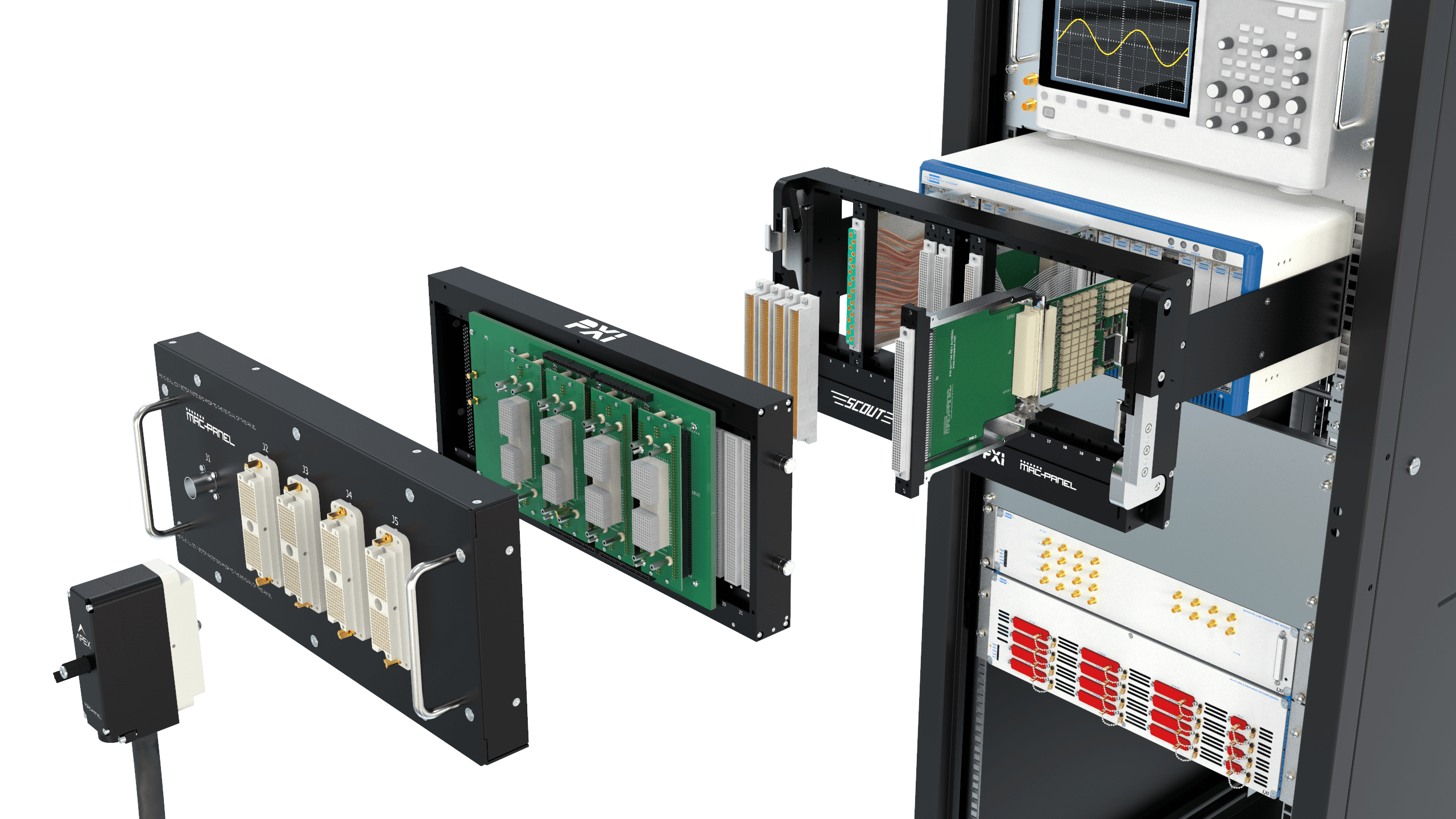Mission Possible
With 11 identical test stations required, wires were out of the question…
Challenge:
As an original equipment manufacturer, the program required deployment of 11 identical PXI-based test systems to 3 unique sites testing NTISR sub-assemblies (non-traditional intelligence, surveillance and reconnaissance) being manufactured at each site. The program required that each facility be able to test any one of the sub-assemblies. High-cost test equipment could not be duplicated at each site, so the test system architecture must allow for instrument interchangeability with no cabling modifications. If two sites swapped sub-assembly builds, a minimum set of instrumentation and interconnect was to be interchanged. Also, due to mission critical performance needs, each test station must electrically correlate to test systems at other sites, post an instrument interchange. Finally, time to TPS execution limited build time to a few months.
Solution:
With a history of serving mission critical applications, and experience in providing high performance mechanical test interface technologies for PXI based ATE, MAC Panel was selected by the customer to deliver test-rack interface components that would minimize obsolescence issues, eliminate error-prone custom cabling, and ensure signal integrity throughout the architecture of the test system.
In order to accomplish program requirements MAC Panel’s SCOUT mass interconnect solution was adopted for this project. The interface solution encompassed the use of MAC Panel DAK (direct access kit) technology and a wire free ITA design.
MAC Panel’s DAK technology eliminated the need for traditional cabling between the PXI instrumentation by way of enclosed PCB and flex circuit connections. The use of DAKs meant that the performance of the PXI test system was repeatable with each test system duplicate. The SCOUT solution also included cable free Interchangeable Test Adapters (ITA).
Leveraging SCOUT’s DAK technology and cable-free ITA technology minimized cabling between the instrumentation and the NTISR sub-assemblies. This method of interconnect reduced human errors, decreased debugging time, and ultimately reduced the time to test by more than 6 weeks.
Solution Overview:
Customer Profile
- A global major aerospace and defense contractor
- Core manufacturing concentrations in military communications systems and electronics
Challenges
•Deploying multiple ATE systems within a “copy-exact” methodology with each system maintaining the same high performance specifications
•Minimizing obsolescence management by selecting proven future-proof technologies
•Reduce overall time to test from 3 months to 6 weeks.
Solutions
•Reducing test rack cabling to minimize human errors during instrument test-rack build
•Standardize on commercial-off-the-shelf (COTS) methods for test instrumentation to test adapter interconnect.
Value Created
•Enabled repeatable test system performance that capitalized on the PXI value proposition of being modular, scalable, and COTS
Reduced Wire ITA
Reduced Wire ITA
The use of PCB (motherboard) ITAs increases system and signal performance. Also, when producing several exact copy ITAs, PCBs fixtures are able to be cloned unlike cabled systems.
PCB DAKs
PCB DAKs
PCB boards are utilized within DAK technology to create more sustainable signal and increased performance between the D/UUT and system unlike the use of cables.

High Performance
Value Created
The customer’s test stream architecture based upon SCOUT mechanical interconnect empowered the contractor to deploy 11 test systems with confidence. Each high performing tester delivered repeatable measurement results no matter which test system was in use. The test system architecture enabled seamless integration, reduced time to test deployment, overall increase in flexibility, along with modularity benefits of PXI instrumentation.
In addition, the solution is scalable to support as many identical test stations as needed overtime as the program grows with repeatable results every time it is deployed and with every use.
Furthermore the success of this new “wire-free” method of interfacing has facilitated the customer to utilize this technology in a number of other test stations ultimately helping them win more contracts while also reducing over all cost of test.



